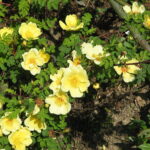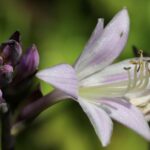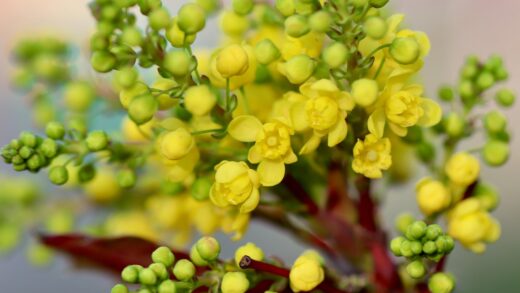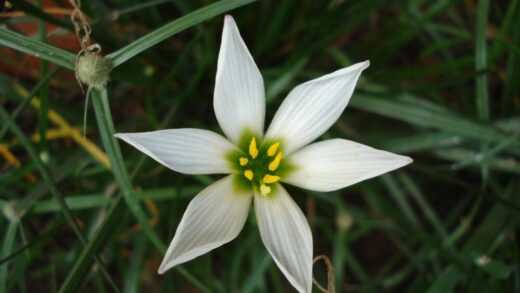Watering and fertilizing the Amazon lily
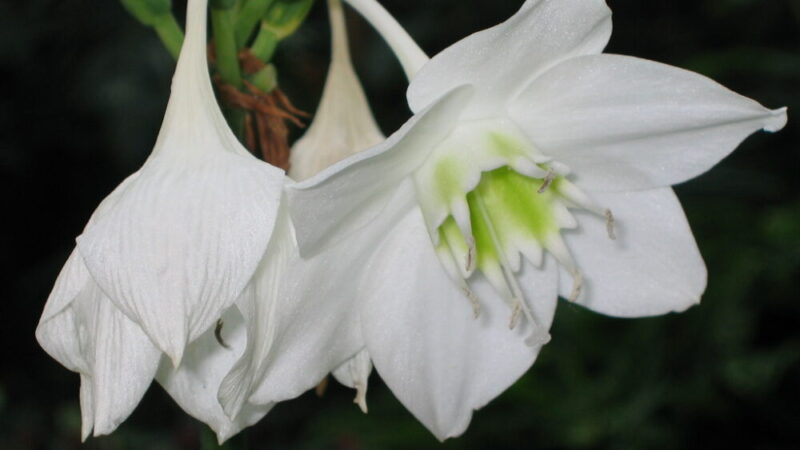
Mastering the art of watering and fertilizing is fundamental to cultivating a thriving Amazon lily, as these two practices directly influence its cycle of growth, rest, and flowering. Originating from the consistently moist rainforest floor, this plant appreciates steady moisture but is highly susceptible to the fatal consequences of overwatering. The key is to find a harmonious balance, providing enough water to support its lush, green foliage and energy-intensive blooming, while ensuring the roots have access to oxygen in a well-drained soil environment. Similarly, fertilization must be timed and measured correctly, supplying the essential nutrients needed for vigorous growth without overwhelming the plant, which can lead to root burn and other complications.
The watering needs of an Amazon lily are not static; they fluctuate significantly depending on the time of year, the ambient temperature, and, most importantly, the plant’s current stage in its growth cycle. During periods of active growth, when the plant is producing new leaves or developing a flower stalk, its demand for water is at its peak. In contrast, during its rest periods, which typically follow flowering, its water requirements decrease substantially. Learning to read the plant’s signals and to check the soil condition, rather than watering on a rigid schedule, is the most effective approach to meet its changing needs accurately.
The quality of the water used can also have an impact on the plant’s health over the long term. Amazon lilies can be sensitive to the chemicals, such as chlorine and fluoride, often found in tap water. Letting your tap water sit out overnight before using it can allow some of the chlorine to dissipate. For best results, using filtered, distilled, or rainwater is an excellent practice that can prevent the gradual buildup of mineral salts in the soil, which can be harmful to the roots over time. Ensuring the water is at room temperature is also important, as cold water can shock the plant’s root system.
Fertilization is the act of providing a supplemental diet to support the plant’s development, especially during its most demanding phases. A well-balanced fertilizer provides the essential macronutrients—nitrogen (N) for leaf growth, phosphorus (P) for root and flower development, and potassium (K) for overall plant function. The timing of fertilizer application is critical; it should only be provided when the plant is actively growing. Fertilizing a dormant or stressed plant is not only ineffective but can be detrimental, as the unused nutrients can accumulate in the soil and damage the delicate root system.
The golden rule of watering
The most crucial principle to remember when watering an Amazon lily is to prioritize preventing waterlogged soil above all else. The fleshy bulb and roots of this plant are extremely prone to rot when left in soggy conditions, a situation from which it rarely recovers. Therefore, the golden rule is to always check the soil moisture level before adding more water. Instead of adhering to a strict calendar schedule like “water once a week,” get into the habit of physically touching the soil. The most reliable method is to insert your finger into the potting mix up to the first or second knuckle. If the soil feels moist at this depth, wait longer; if it feels dry, then it is time to water.
More articles on this topic
When you do determine it is time to water, do so thoroughly and deeply. The best technique is to slowly pour water over the entire soil surface until it begins to flow freely from the drainage holes at the bottom of the pot. This method ensures that the entire root ball is evenly saturated and helps to flush out any accumulated mineral salts from the soil. After this thorough watering, it is absolutely essential to allow the pot to drain completely. Never let the pot sit in a saucer full of water for an extended period, as this will keep the soil at the bottom saturated, effectively drowning the roots and leading directly to rot.
The frequency of this thorough watering will change throughout the year. During the active growing season in spring and summer, when temperatures are warmer and the plant is producing new leaves and flowers, you may find yourself watering every 7 to 10 days. However, during the cooler months of autumn and winter, or during a designated rest period, the plant’s metabolic activity slows down significantly. During these times, you may only need to water every two to four weeks. Always let the soil be your guide, not the calendar.
It is also beneficial to observe the plant itself for signs of its water needs. While you should not wait for it to wilt, as this causes stress, the weight of the pot can be a good indicator. A freshly watered pot will feel noticeably heavier than one where the soil has dried out. With practice, you can learn to gauge the moisture level simply by lifting the pot. This combination of checking the soil by touch and feel will help you perfect your watering routine, keeping your Amazon lily perfectly hydrated without ever putting it at risk of the dreaded root rot.
Understanding fertilizer needs
Fertilizing an Amazon lily is about providing a targeted boost of nutrients to support its energy-intensive processes of producing large leaves and spectacular flowers. During its active growth phases, typically in the spring and summer, the plant will readily consume the nutrients available in its potting soil. A balanced, water-soluble fertilizer is the ideal choice for this purpose. Look for a formula where the N-P-K (Nitrogen-Phosphorus-Potassium) numbers are relatively equal, such as 10-10-10 or 20-20-20. A fertilizer slightly higher in phosphorus can also be beneficial just before and during the flowering period to specifically encourage robust bloom development.
More articles on this topic
The proper application of fertilizer is just as important as the type you choose. It is crucial to always dilute the fertilizer to half the strength recommended on the product label. Amazon lilies have sensitive roots that can be easily “burned” by a full-strength fertilizer solution. This chemical burn can cause significant damage to the root system, leading to yellowing leaves and a general decline in the plant’s health. Applying a weaker solution more frequently is a much safer and more effective strategy than providing infrequent, strong doses. The fertilizer should always be applied to soil that is already moist, never to dry soil, so it is best to fertilize the day after a regular watering.
The timing of fertilization is intrinsically linked to the plant’s growth cycle. You should only feed your Amazon lily when it is actively growing, which is indicated by the production of new leaves or a developing flower scape. Begin fertilizing in the spring as new growth appears and continue every two to four weeks throughout the summer. As autumn approaches and growth naturally slows, you should reduce the frequency of feeding. It is absolutely essential to completely stop all fertilization during the plant’s rest period, which is typically in the winter or after flowering. Feeding a dormant plant can cause a toxic buildup of salts in the soil, leading to root damage.
It is also important to recognize the signs of both under-fertilization and over-fertilization. A plant that is not receiving enough nutrients may exhibit slow or stunted growth, smaller-than-usual leaves, or a failure to bloom. On the other hand, a plant that has been over-fertilized may show signs like yellowing or browning leaf tips, a white crust of fertilizer salts forming on the soil surface, or a sudden wilting of the leaves despite moist soil. By observing your plant closely and adhering to a “less is more” philosophy, you can provide the perfect nutritional support for its needs.
Adjusting for seasonal changes
The care routine for an Amazon lily, particularly its watering and feeding schedule, must be adapted to reflect the changing seasons. Even when grown indoors, the plant is sensitive to the subtle shifts in light duration, intensity, and ambient temperature that occur throughout the year. In the spring and summer, when daylight hours are longer and the light is brighter, the plant’s metabolism is at its peak. This is the period of most active growth, which means it will require more frequent watering and regular fertilization to support the development of new foliage and flowers. You should consistently check the soil and provide nutrients as outlined for the active growth phase.
As autumn arrives, the days become shorter and the intensity of the light decreases. This natural change signals the plant to begin slowing down its growth. In response, you should begin to gradually reduce the frequency of your watering, allowing the soil to dry out a little more between sessions. This is also the time to taper off your fertilization schedule. You might move from feeding every two weeks to once a month, and then cease feeding altogether as winter approaches. This gradual transition helps the plant ease into its winter rest period smoothly, rather than being shocked by a sudden change in its care.
Winter is the primary rest period for the Amazon lily. During these months, the plant’s growth will be minimal or may halt completely. Its water requirements will be at their lowest, and it is crucial to adjust your watering practices accordingly to prevent root rot in the cool, damp soil. You might only need to water once every three to four weeks, but always rely on the physical soil check rather than the calendar. No fertilizer should be given during this dormant period. This time of rest is not a sign of poor health; it is a vital part of the plant’s natural cycle, allowing the bulb to conserve and build up energy for the upcoming spring growth spurt.
When spring returns and you notice the first signs of new activity, such as a new leaf beginning to unfurl, it is a clear signal to gradually resume your more active care routine. Start by increasing the watering frequency slightly, ensuring the plant has the moisture it needs to support this new growth. After a couple of waterings, you can reintroduce a half-strength balanced fertilizer. This careful attunement to the seasonal rhythm and the plant’s corresponding signals is the hallmark of a skilled grower and is essential for the long-term health and repeated flowering of your Amazon lily.
The role of rest periods
Understanding and facilitating rest periods is a critical, yet often overlooked, aspect of Amazon lily care that directly influences its ability to flower. In its native habitat, these rest periods are triggered by subtle shifts in the environment, typically a period of slightly reduced rainfall. For an indoor plant, you can mimic this process to encourage blooming. A rest period is essentially a phase of reduced watering and no fertilization that lasts for approximately four to six weeks. This mild stress signals to the bulb that it should shift its energy from vegetative growth to flower production.
Initiating a rest period is a deliberate action you can take, usually after a flowering cycle is complete and the plant has had a couple of months to produce new leaves and replenish its energy. To begin, simply start extending the time between waterings. Where you might have watered when the top inch of soil was dry, you now wait until the top two or three inches are dry. The goal is not to let the bulb desiccate completely but to keep the soil significantly drier than usual. During this entire four-to-six-week period, you must completely withhold any fertilizer.
It is also beneficial, though not strictly necessary, to move the plant to a slightly cooler location during this rest period. A spot where the temperature is consistently around 16°C to 18°C is ideal. This slight drop in temperature, combined with the reduced moisture, further enhances the dormancy signal to the bulb. Do not worry if the plant does not produce any new leaves during this time; that is the entire point of the rest. The existing leaves should remain green and healthy, though they might not look as turgid as during the active growth phase.
The conclusion of the rest period is what provides the powerful trigger for flowering. After four to six weeks of this drier, cooler treatment, move the plant back to its usual warmer location and give it a thorough, deep watering. Resume your regular watering schedule, and a week or two later, reintroduce your half-strength fertilizer program. This sudden return to optimal growing conditions usually jolts the bulb into action, and within a few weeks, you should be rewarded with the sight of a new flower scape emerging. By mastering this cycle of rest and activity, you can enjoy blooms from your Amazon lily multiple times a year.
Water quality considerations
While the frequency and method of watering are paramount, the quality of the water you provide can also play a significant role in the long-term health of your Amazon lily. Tap water in many municipalities is treated with chemicals like chlorine and fluoride to make it safe for human consumption. While these are generally in low concentrations, they can accumulate in the potting soil over time and potentially cause issues for sensitive plants. One common symptom of chemical sensitivity is the development of brown, crispy edges or tips on the leaves, a condition often mistaken for low humidity.
To mitigate the potential negative effects of tap water, there are several simple and effective strategies you can employ. The easiest method is to let your tap water sit in an open container for at least 24 hours before using it. This allows much of the dissolved chlorine gas to dissipate into the air. However, this method is not effective for removing fluoride or chloramine, a more stable disinfectant used in some water systems. Therefore, if you know your water is heavily treated or if your plant is showing signs of sensitivity, you may want to consider alternative water sources.
For the dedicated grower, providing the purest water possible is the best way to ensure the plant’s optimal health. Rainwater is an excellent, naturally soft, and chemical-free option that you can collect and store for your houseplants. Similarly, distilled water, which can be purchased from most grocery stores, is free from minerals and additives and is another superb choice. Using these pure water sources prevents the buildup of mineral salts in the soil, which can interfere with the roots’ ability to absorb water and nutrients, a condition known as fertilizer burn, even in the absence of excessive fertilizing.
If using pure water sources is not practical, another important maintenance task is to periodically flush the soil of your Amazon lily. Every few months, take the plant to a sink or bathtub and water it thoroughly, letting a large volume of water run through the pot and out the drainage holes for several minutes. This leaching process helps to wash away the accumulated mineral salts from tap water and excess fertilizer, effectively refreshing the soil environment. By being mindful of water quality, you are addressing a subtle but important detail that contributes significantly to the overall, long-term vitality of your plant.
📷: Flickr / Szerző: 阿橋花譜 HQ Flower Guide / Licence: CC BY-SA 2.0










